Geraniums on 16 April, 2010
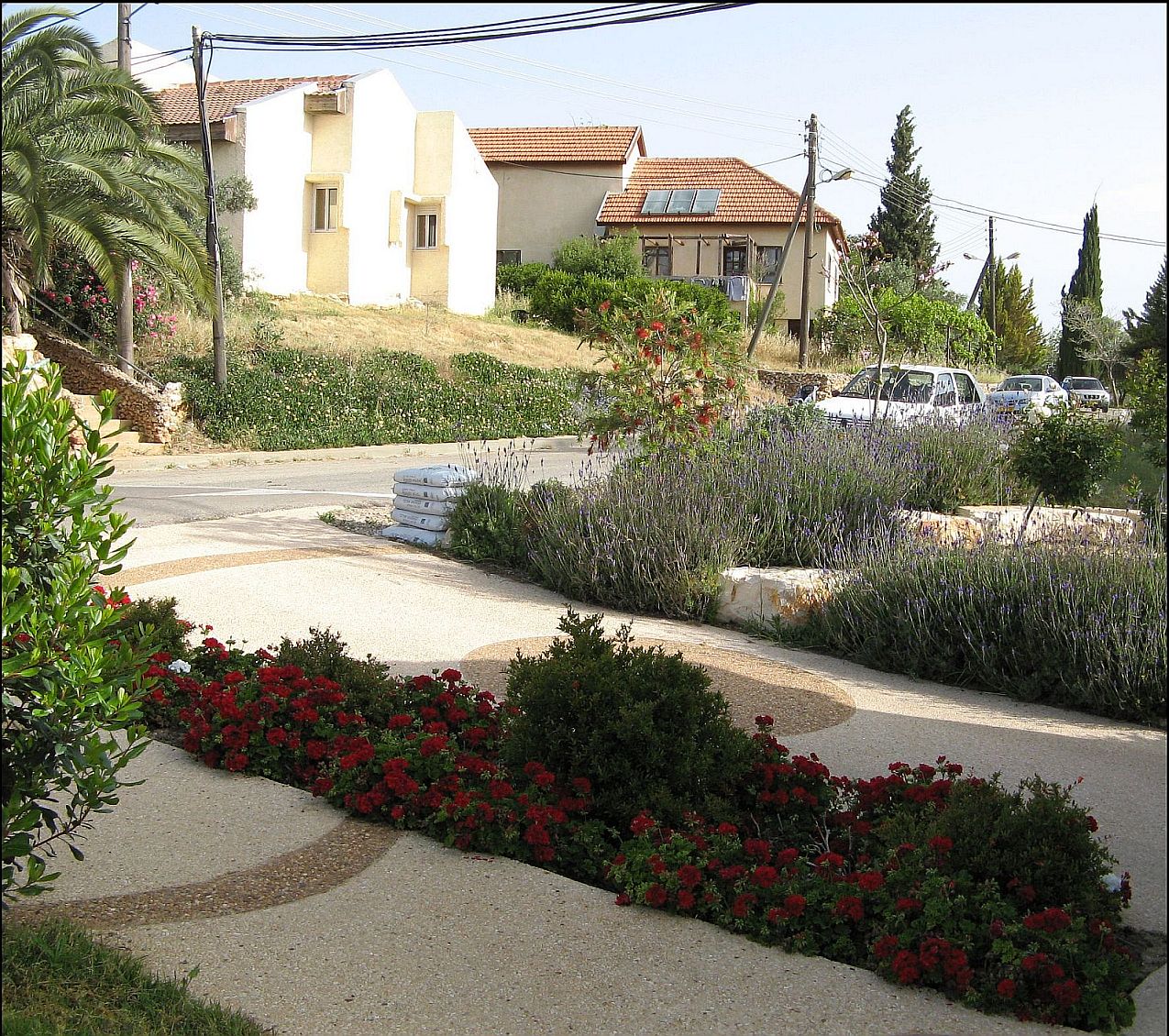
Either browse below or jump to a specific link.

Geraniums seem to do very well in my Shomron garden with very little care. I dead-head them, which means plucking off the dead blooms, and once or twice a year, I severely cut them back whenever they begin to look "leggy" or "scraggly", as opposed to compact. My friends from the UK and New Zealand tell me that some of my geraniums are really pellargoniums, but I have yet to fully comprehend any practical consequence of this distinction.
The larger plants among the red geraniums (above) are relatively rare,
minature (decorative) pomegranate bushes. I have received many compliments on
them, but I don't remember where they were bought or where to get more. The
minature pomegranates they produce look edible, but I am not
sure.
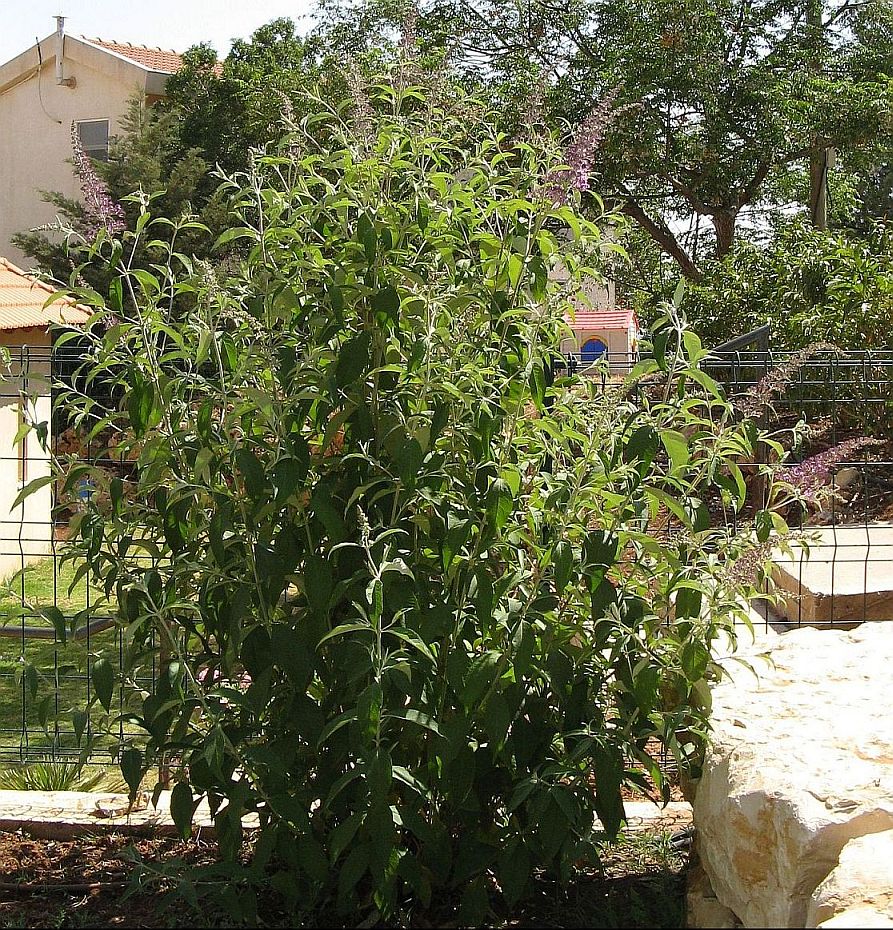
Buddleia, or butterfly bush, as it is called because butterflies are
attracted to it, also does well in my Shomron garden with minimal care. Before
the winter, I cut it back almost to the ground (to 5 - 10 cm). I have been told
not to cut it back so severly (to 30 cm instead), but I have followed the more
drastic procedure twice already and the plant is thriving.
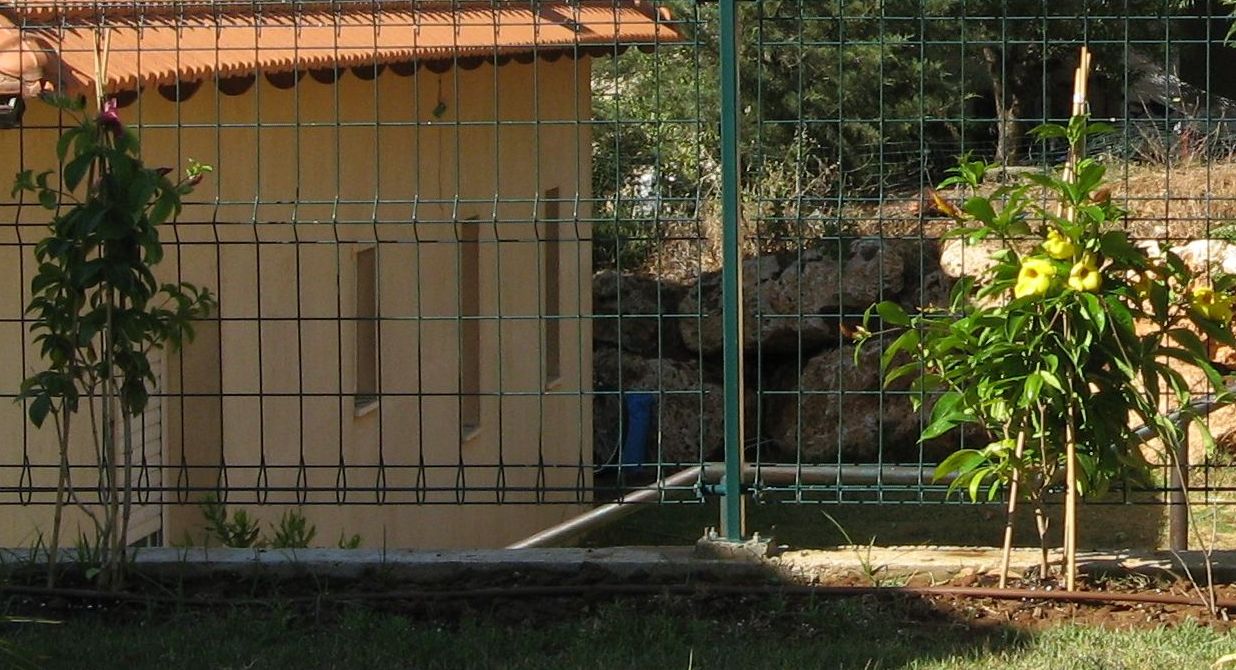
A plant that I have not had good luck with
is Allamanda. Generally there are two varieties available in
Israeli nurseries, the more common yellow variety, Cathartica,
shown on the right, and the more exotic purple
variety, Blanchetti, on the left. The first year I planted
them, 2008, the winter was unusually cold and the plants died. I
replaced them, and after an unusally mild winter in 2009, they showed
a small amount of regrowth after the winter and only meager bloom in
early fall. The following winter was average and the bloom was even
less. My plan for next year is to plant a second blue thunbergia in
place of the Allamanda. The former, while it dies back in the winter
like the Allamanda, also regenerates nicely in the spring and, unlike
the Allamanda, provides at least two months of attractive bloom late
summer and fall.
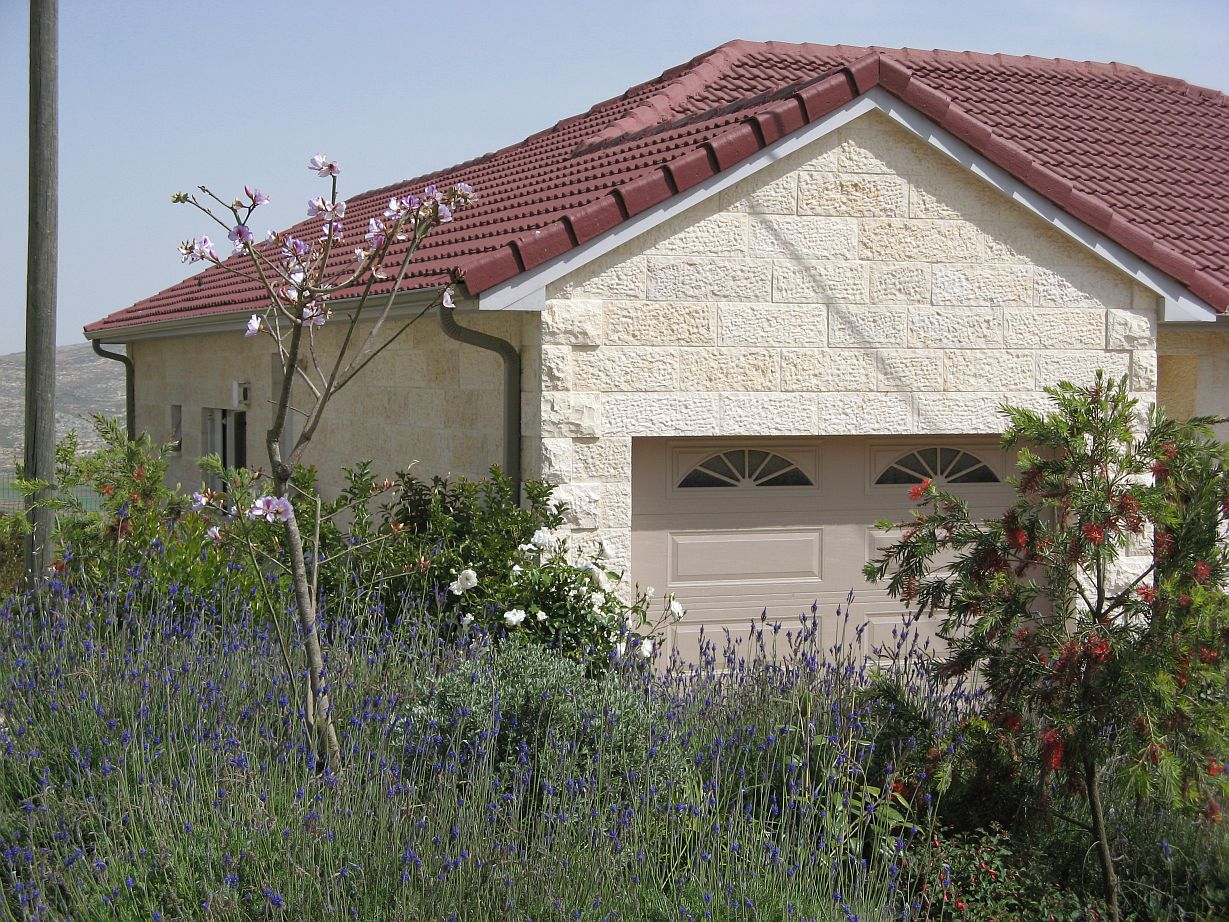
The delicate tree on the left, with very pleasant purple-white blossoms in the Spring, is called a Bauhinia. That on the right, with red blossoms that look like they would be perfect on a brush for cleaning baby-bottles, is called a bottle-brush or more technically, a collistemon. Both of these, like many of the trees found in the Shomron, can be grown as a tree or a bush. You can select for one or the other by appropriate pruning. I have been aiming for something in between; on a single stem, but branching fairly low down, so it will be full at eye level. The bauhinia came as a tall gangly tree, so it has been a question of topping it off and not pruning off lower new growth. For the collisteman, it's been a question of pruning off really low new growth and aggressively cutting off all the spent blossoms after bloom to encourage more fullness.
In between the two trees is an Iceberg rose (white), also grown as a tree. I must confess I have not been totally enamored with the performance of my Iceberg rose, while at the same time admitting that if it always looked as full as in the above picture, I would be.
In the foreground, is lavender. There are many varieties of lavender
available in Israel. I am not sure which one I have, but it grows exceptionally
well and has not yet become "scraggly", like some I have seen. This is probably
because I am continually hacking away at the lavender to keep it from being
overgrown. I have not yet found the proper tool for this task. I have used
what is called in the US a weed-wacker or edge trimmer and here a
"chermesh". This is fairly easy, but tends to give the lavender a rather
devastated appearance until it grows back. I also have tried cutting it back
only to about 1/3 its size using a standard prunning shear, which is a fair
amount of work. I recently have purchased a larger size hand-pruning tool to
use as a hedge trimmer, which so far, seems to work best.

One of the joys of living in the Shomron, where the weather is
semi-tropical, is being able to grow Bird of Paradise. They take a few years
before blooming for the first time, but add splendid color when finally ready.
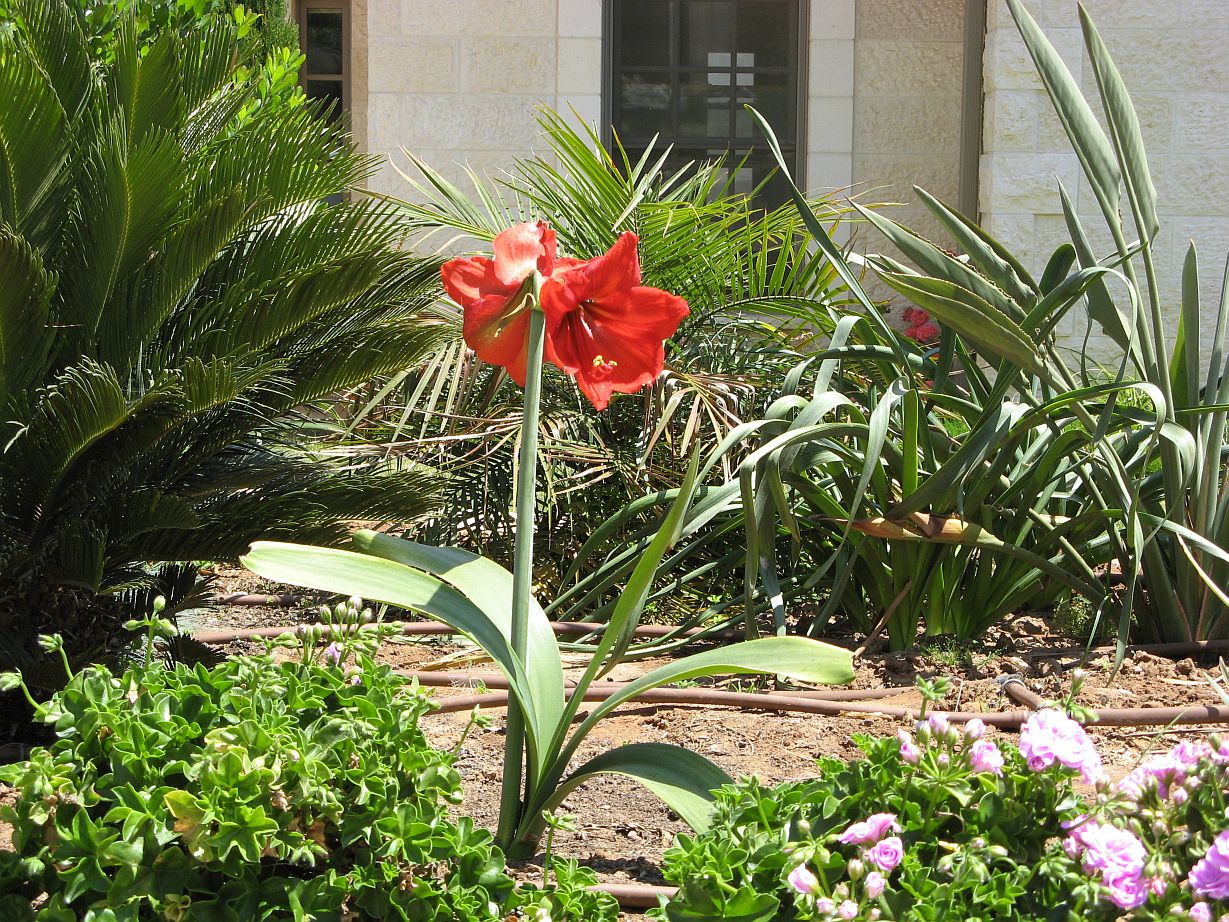
This amaryllis bulb took three years before blooming for the first time
in late April.

This 2-yr-old fuchsia was started from a tiny slip costing less than a few shekels (< $1).
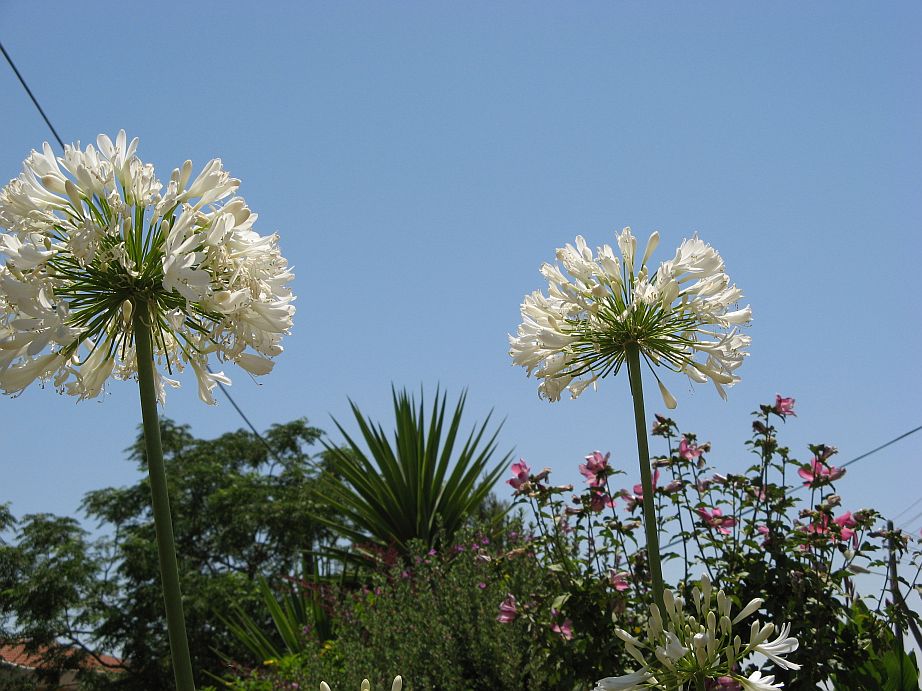
This white agapanthas, in the foreground, has bloomed only two times in
the four years since the bulb was planted, each time, slightly more
showier.
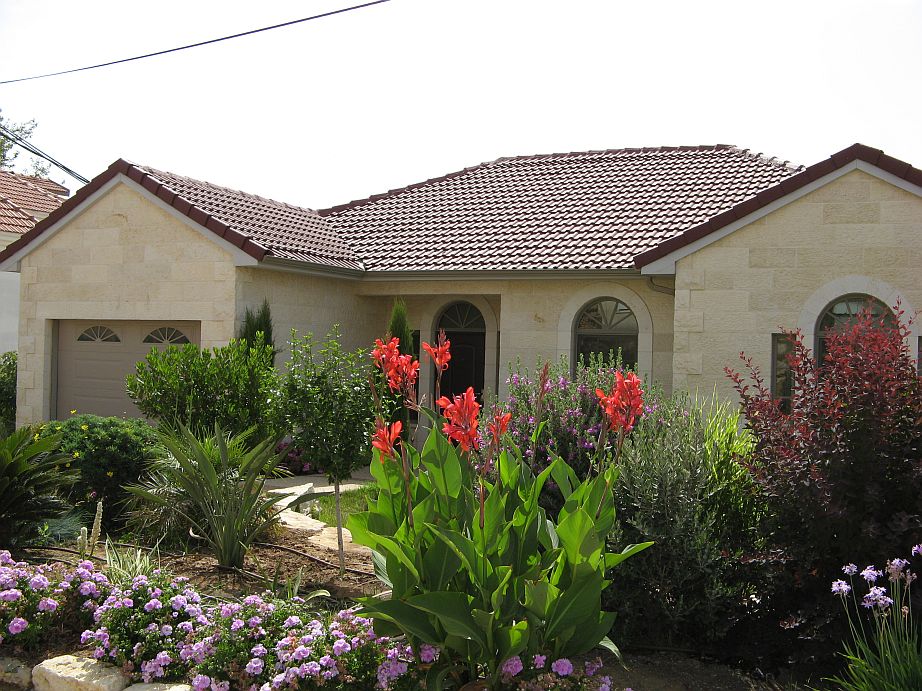
The canna, transplanted as bulbs from someone elses garden two years
previously, started looking much better after I thinned out the irises that were
planted behind them. As an added treat, in addition to the beautiful red
flowers being attractive to humans, they are also attract Israel's hummingbird,
the צופית, also know as the Palestine sunbird. In
the foreground are lavender geraniums. To the far right, is a dwarf agapanthas.

This dwarf agapanthas has done well, providing many months of pleasing
clusters of 6-petaled, star-shaped flowers on relatively long stems.